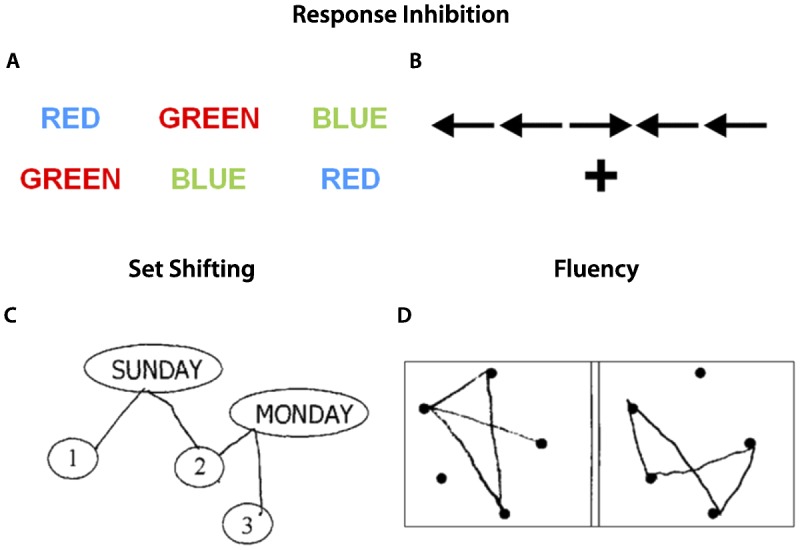Figure 4-1.

Example tasks to assess response inhibition, set shifting, and fluency. A, For the Stroop test, patients are asked to first read the words ignoring the colors (color naming), then name the colors ignoring the word (interference). B, For the Flanker task, patients are asked to identify the direction of the central arrow, with the adjacent arrows pointing either in the same direction (congruent) or opposite direction (incongruent). Stroop interference and incongruent trials on the Flanker task are considered tests of response inhibition. C, Trail making is a classic set shifting task in which patients write lines alternating in order between numbers and days of the week. D, Design fluency is an example of a nonverbal fluency task, in which patients are asked to draw as many unique designs as possible connecting the dots with four lines in 1 minute.
